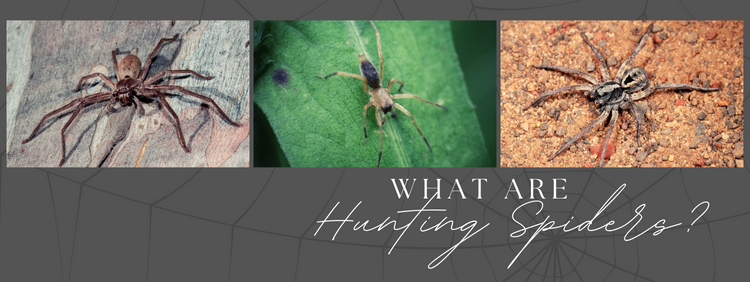Toronto Pest Control: What are Hunting Spiders?

All spiders fit into one of two categories: hunting spiders and web-building spiders. The latter are more common, but the former are older. Hunting spiders have other ways of catching their prey, either by stalking or lying in wait for an unsuspecting insect to get too close. While you are more likely to see hunting spiders outside, they can occasionally come inside your home, a situation that could require pest control in Toronto.
Here are some examples of common hunting spider species that you may see around your home.
Sac Spiders
All spiders, including hunting spiders, have the ability to spin silk. Hunting spiders use it for purposes other than building webs to catch food. For example, sac spiders hunt at night, and during the day, they hide under stones or in rolled-up leaves, but if they cannot find any shelter of this nature, they spin themselves a small sac-like structure, kind of like a sleeping bag, in which to hide until nightfall.
Sac spiders like to feed on small insects. You are most likely to find them outside. If your yard contains plenty of foliage, it is more likely to attract sac spiders. They are typically yellow in colour or a similarly light shade. Though they are related to the brown recluse, their venom is milder. Therefore, their bite is not likely to have severe or long-lasting effects. Because sac spiders rarely come indoors, it is unlikely that you will ever be bitten by one.
Parson Spiders
Like sac spiders, parson spiders prefer to hunt at night and hide out during the day, preferably near trees. They also like to hide under rocks, but if they get into your home, they may make do with other objects or hide in structural cracks. A parson spider is an ambush predator; it will lie in wait for an insect to come along. When the insect gets close enough, the spider will run up and bite it. When the insect is dead or immobilized from the venom, the spider can feed on it.
The abdomen of a parson spider is mostly covered with brown hair, with a distinctive white stripe running down the middle. This is where it gets its name; the white stripe was believed to resemble ecclesiastical garb. The parson spider is medium sized, and while its bite is not lethal, some people can have an allergic reaction to it.
Wolf Spider
The wolf spider is the type of hunting spider you are most likely to see in your home, both because it is more likely to get in than other species and because it is so large that you are more likely to notice it if it does get in. Wolf spiders can be gray to brown in color and are among the larger spider species. They are able to live and flourish in the following habitats:
- Beaches
- Fields
- Gardens
- Grassy areas
- Woods
Because they are able to adapt to different habitats, they are more likely to make their way into your home.
There are different species of wolf spiders, and they have different means of catching prey. Some are ambush hunters, while others actively chase down and pounce on insects. They are among the fastest-moving spider species. Wolf spiders don’t hunt at a particular time of day; instead, they hunt whenever the temperature is warm enough for them.
Wolf spider bites can cause itching, swelling, and mild pain. However, they typically don’t bite unless severely provoked.
Call Truly Nolen for Pest Control in Toronto
Regardless of what type of spiders you have in your home, they are there because there is plenty of food for them to eat. Therefore, effective spider removal usually means addressing an underlying insect infestation as well. We include both as part of our comprehensive pest solutions.